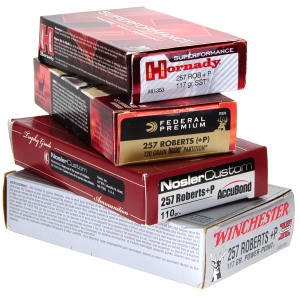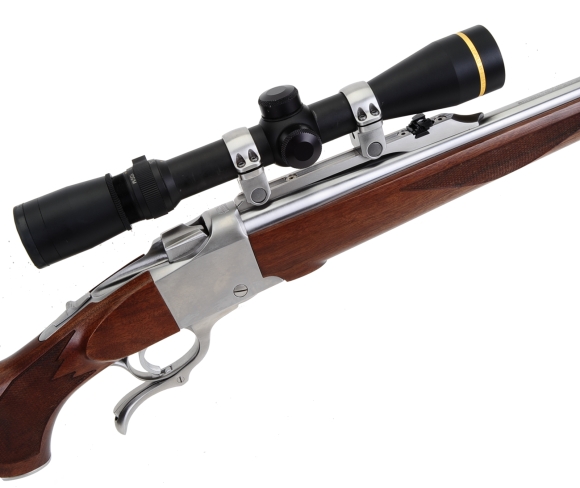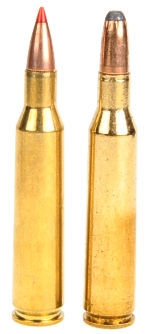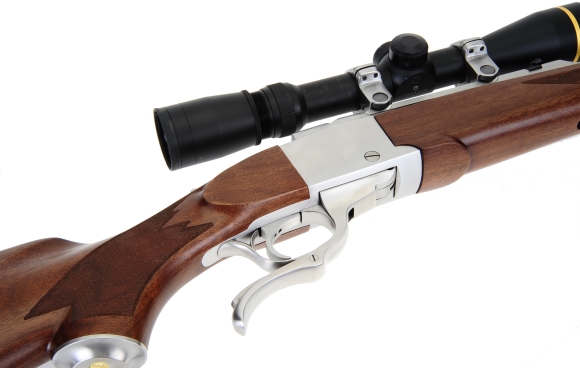 One thing, and probably the only thing I miss about living in California were the shooting ranges. Covered firing line, cement shooting benches, full time range supervision and maintenance, and a pro shop. In Maine, I mostly hose myself down with tick spray, carry a side arm and walk off into the woods and set up targets. That said, I can shoot when I want and not have to wait in line for my turn to get a bench or be involuntarily drawn into the local shooting community by folks who need to externalize their enthusiasm for firearms while I’m trying to make the most out of an hour of work time.
One thing, and probably the only thing I miss about living in California were the shooting ranges. Covered firing line, cement shooting benches, full time range supervision and maintenance, and a pro shop. In Maine, I mostly hose myself down with tick spray, carry a side arm and walk off into the woods and set up targets. That said, I can shoot when I want and not have to wait in line for my turn to get a bench or be involuntarily drawn into the local shooting community by folks who need to externalize their enthusiasm for firearms while I’m trying to make the most out of an hour of work time.
There are lots of folks who are single purchase gun owners; a purchase to satisfy a singular need. The purpose might have been for self defense, a special hunting trip, or even to secure a collectable. For others, firearms are a means to an end; a catalyst to create community and build friendships. Then there are enthusiasts who are not looking to make new friends and influence people, who can’t decide if a sharp spike in the eye or being caught in a social settings represents a more tortuous situation. Yes, sometimes it is just about the guns. Please see Plato’s Cave, shackles optional, or Saint Augustine… on just about anything.
More directly to the subject…

Walking out to the shooting area, the Ruger No.1 felt good. Easy to hold onto and satisfying heft. In fact, I carried it back and forth with me when I did target checks to get a feel for what it would be like if hauled around the woods on some raggedly pitched terrain. Not a featherweight at seven pounds, but the weight isn’t excessive and the rifle’s balance makes the weight no more than steadying.
Recoil is modest; the rifle comes straight back under recoil with very little muzzle rise and report is surprisingly mild for a short barrel rifle. The lever stoke is smooth… brief. The breech block locks up like a bank vault, then opens, extracts and ejects cleanly. Shooting the rifle through its metallic sights was… rewarding.
The subject rifle came from the factory configured to extract and toss brass free to leave an open chamber for reloading. The ejector strut adjustment screw hidden under the forearm can change the configuration to extract without ejecting. The trigger is adjustable, but not customer adjustable. In this case, the pull ws a little heavy at just a tick under four pounds, but crisp and with a short pull.
 The first run at the Ruger No.1 in 257 Roberts was done only with factory ammunition. Two of the selection share a common 117 grain weight. Pictured left, one is a round nose and one is spire tipped SST. It had been common practice to load the 117 grain bullet in round nose form, which resulted in a shorter and more easily stabilized bullet with a 10″ twist and moderate Roberts’s velocity. The shorter bullets also yields a shorter overall cartridge length that works in short action firearms without deeply seating the bullet and robbing case powder capacity. The difference in performance is not minor.
The first run at the Ruger No.1 in 257 Roberts was done only with factory ammunition. Two of the selection share a common 117 grain weight. Pictured left, one is a round nose and one is spire tipped SST. It had been common practice to load the 117 grain bullet in round nose form, which resulted in a shorter and more easily stabilized bullet with a 10″ twist and moderate Roberts’s velocity. The shorter bullets also yields a shorter overall cartridge length that works in short action firearms without deeply seating the bullet and robbing case powder capacity. The difference in performance is not minor.
| Bullet | Weight Grains |
Muzzle FPS |
200 Yd FPS |
200 Yd FT/Lbs |
Best Zero Yards |
Point Blank Yards |
| Winchester RN | 117 | 2800 | 2007 | 1046 | 214 | 227 |
| Hornady SST | 117 | 2800 | 2347 | 1431 | 232 | 247 |
One of the factors that leads firearm enthusiasts to careful selection of factory ammunition, if not handloading. Just changing from a Winchester 117 grain round nose bullet with a ballistic coefficient of 0.213 to the Hornady 117 grain SST with a ballistic coefficient of 0.390 provides a performance difference that typically separates standard from magnum cartridges. The best zero and point blank are with a +3 maximum ordinate.
Off the shelf performance
| Ammunition | Bullet Type |
Bullet Weight Grains |
Rated Muzzle FPS |
Actual Muzzle FPS |
100 Yard 3 Shot Group” |
| Nosler Custom +P | AccuBond | 110 | 3000 | 2857 | 0.8 |
| Winchester Super X +P | Power Point |
117 | 2945 | 2661 | 0.7 |
| Hornady Superformance +P | SST Poly |
117 | 2780 | 2764 | 0.8 |
| Federal Vital-Shok +P | Partition SP |
120 | 2800 | 2644 | 0.8 |
 While the round nose shot 0.1″ tighter than the others when shooting for record, continued shooting showed no statistical difference within the four types of ammo represented. I would also say I was not have a good range day, which I believe is evident in pulled shots. Settling down late in the afternoon, I could knock off at least a tenth inch across the board.
While the round nose shot 0.1″ tighter than the others when shooting for record, continued shooting showed no statistical difference within the four types of ammo represented. I would also say I was not have a good range day, which I believe is evident in pulled shots. Settling down late in the afternoon, I could knock off at least a tenth inch across the board.
The Ruger No.1 has come a long way over the years. I’ve owned/own a good number of them and the earliest, a 375 H&H, never shot under 1.2″ – 1.5″. A slightly newer .45-70 Gov’t version shot about the same, but those manufactured in the past few years seem to deliver excellent shot to shot consistency without resorting to after market accessories or gunsmith finessing.
I ran out of shooting time before I could assemble some handloads, but maybe I can squeeze in some time on the weekend before calling the project done.
Ignore the bullseyes. When I shoot groups I will zero one type of ammunition then continue shooting to the same point on a target and let point of impact shift with each individual type of ammo. I’m grousing about my performance, but the accuracy was more than enough for any hunting season. Targets below in order as they appear on the table above. Damn, that was confusing.

Conclusions?
Sure. Why not? We may be right back where we began. The Ruger No.1 is a special kind of firearm of the type that is growing more scare with each passing day.For folks who can appreciate and exercise the potential the No.1 has to offer and to take on the challenge of a single shot. I felt as though I spent some days with a piece of firearm history and it was such a nice change from all things polymer. Almost made me wish I shot at a public range so I could join that community and show off this little gem, but I am OK enjoying it for myself.


Email Notification